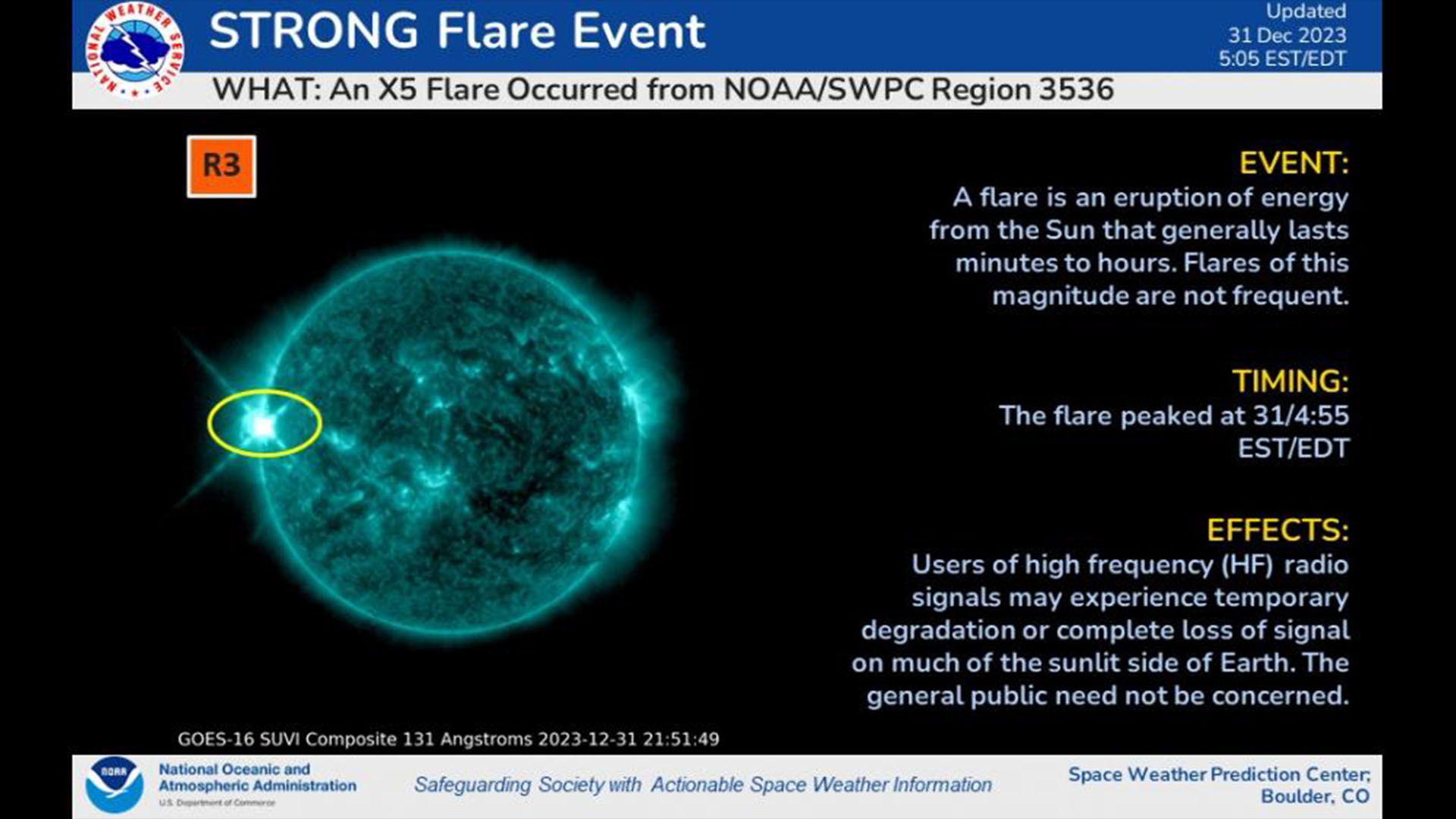Monstrous X5 solar flare launched on New Year's Eve could bring auroras to Earth tonight
In the final hours of Dec. 31, 2023, the sun launched its most powerful solar flare in 6 years. On Jan. 2, radiation from the blast may bring auroras to Earth's skies.

Even the sun is not above launching a few New Year's Eve fireworks, it seems. In the final hours of Dec. 31, 2023, satellites near Earth detected a gargantuan X5-class solar flare erupting from our star — ending the year with the single most powerful solar explosion seen since 2017.
According to the National Oceanic and Atmospheric Administration (NOAA), the flare was accompanied by a gargantuan blob of high-speed solar particles known as a coronal mass ejection (CME), which may graze Earth's magnetic field today (Jan. 2), possibly triggering widespread auroras across the sky and minor geomagnetic storms. Typically, the best places to view auroras are near Earth's poles, but CMEs can push those auroras to much lower latitudes than usual.
Solar flares occur when magnetic fields on the sun become too tangled and snap like rubber bands, kicking up powerful waves of radiation that stream across space at high speeds. X-class flares are the most powerful type of solar flare, and they have been known to interfere with satellites, radio systems and power grids when the flares' accompanying radiation bursts pass over Earth.
The Dec. 31 X5 flare was the strongest of 2023, soundly beating an enormous X2.8 flare that launched from the exact same spot on the sun on Dec. 14. At the time, that X2.8 flare was also declared the most powerful flare since Sept. 10, 2017, when a gargantuan X8.2-class flare erupted from the sun, according to NOAA.
The New Year's Eve flare was also the strongest of the current solar cycle — solar cycle 25, which began in 2019 and is predicted to peak this year. The sun follows an 11-year cycle of activity, which reaches a peak called solar maximum about halfway through. Although the current cycle's peak was initially predicted to hit in 2025 and be relatively mild, an onslaught of solar activity in 2023 has prompted scientists to revise their predictions.
Solar maximum is now predicted to hit sometime in 2024. And if last year's intense solar activity is any indication, the peak will be a powerful one; in addition to these powerful flares, 2023 also witnessed the most powerful geomagnetic storm in 20 years, as well as a 20-year high in the number of sunspots observed in one month.
Get the world’s most fascinating discoveries delivered straight to your inbox.

Brandon is the space / physics editor at Live Science. With more than 20 years of editorial experience, his writing has appeared in The Washington Post, Reader's Digest, CBS.com, the Richard Dawkins Foundation website and other outlets. He holds a bachelor's degree in creative writing from the University of Arizona, with minors in journalism and media arts. His interests include black holes, asteroids and comets, and the search for extraterrestrial life.



